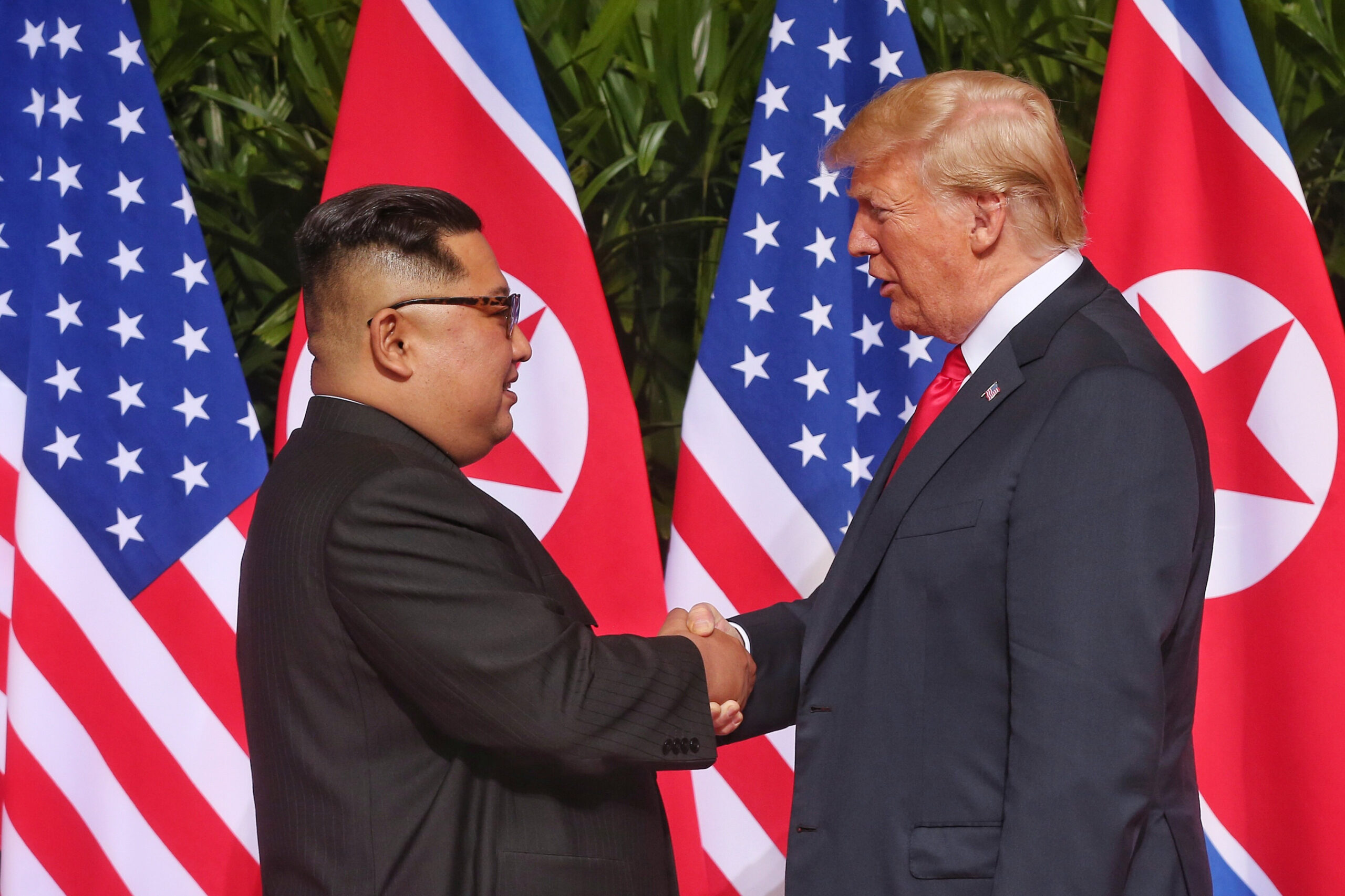A meeting between the leaders of the US and North Korea in Singapore on 12 June ended neither in collapse nor a major leap forward. For all the symbolism of a meeting between Donald Trump and Kim Jong-un, the key points of a joint statement signed by the pair are essentially the same as those agreed by the two sides following talks in 1993.
The summit was tightly scripted and superficial but still represents progress from where the relationship was a year ago as the North prepared for its first intercontinental ballistic missile (ICBM) test and the two leaders exchanged increasingly personal insults. This even though both sides have overstated the significance of the summit’s outcomes. Continued bilateral engagement is a positive sign and remains the most probable route to reducing the risk of conflict on the Korean Peninsula.
The four-point declaration issued after the meeting pledges new relations between the US and North Korea; efforts to ‘build a lasting and stable peace’ on the Korean Peninsula; a commitment by the North to ‘work towards the complete denuclearisation of the Korean Peninsula’; and the recovery and repatriation of POW/MIA remains. But the two sides’ positions on the key issue of Pyongyang’s nuclear weapons are still fundamentally misaligned, and the ultimate prospects for a workable deal seemingly remain slim.
A North Korean statement last month that prompted Trump to call off the talks shows that tensions persist. First, the North is sensitive to suggestions from the Trump administration that it was ‘maximum pressure’ that had brought Pyongyang to the table. Second, the US proposals for what a deal might look like are anathema to the North – it rejects ‘complete, verifiable and irreversible denuclearisation’ (CVID), and any notion of ‘abandoning nuclear weapons first’ with compensation for the disarmament following afterwards.
Ahead of talks, senior figures in the US administration continued to insist that it will not make concessions prior to the North committing to CVID. And despite an agreement to continue negotiations – and even the prospect of a visit by Kim to the White House – the North has given no public indication that it is willing to unilaterally give up its nuclear weapons. Only the most positive reading of the joint statement could interpret it as a pledge by Pyongyang to surrender what it is still calling its ‘treasured sword’.
By offering Kim a symbolic meeting of equals with the president, the US made a major concession in the negotiation process. And in a press conference after meeting Kim, President Trump also said that the US would halt ‘war games’ – a probable reference to military exercises on the Peninsula. Pyongyang has sought both for years and has really given very little in return, either before the summit or in the joint statement. These US compromises – only one of which is reversible – may help sustain talks into a new round. But if Washington is not willing to modify its position on CVID in the longer term, then its flexibility on other issues seems likely to be wasted.







